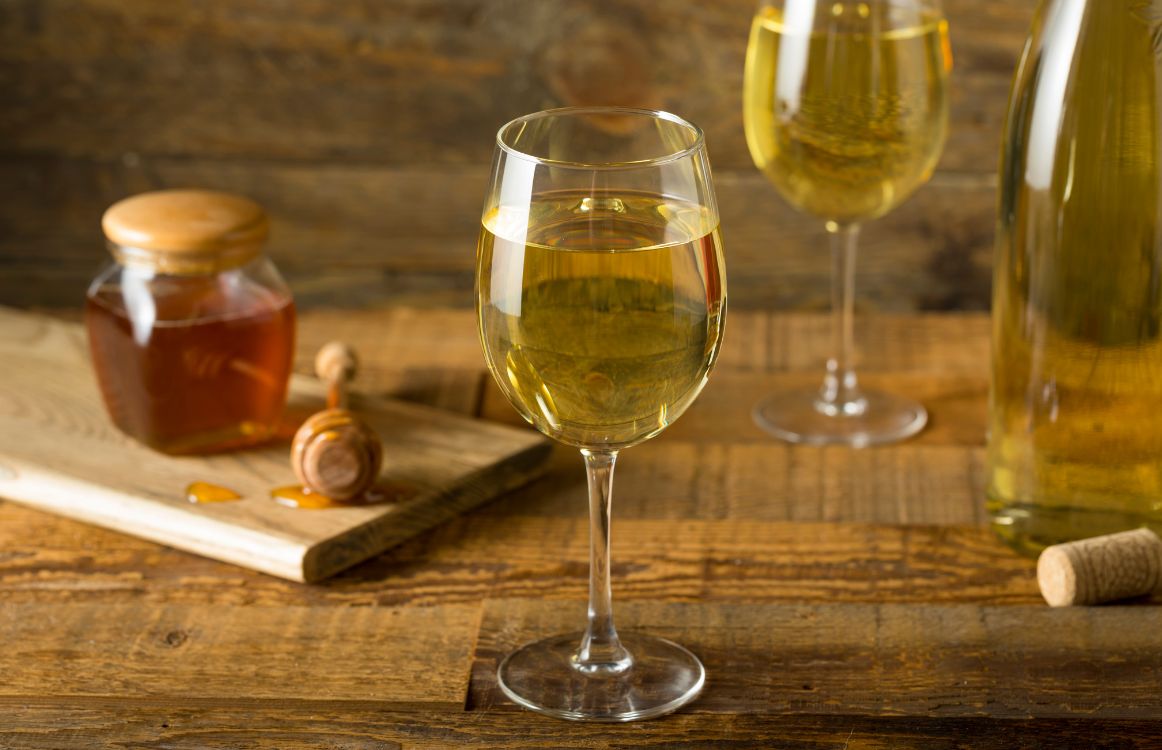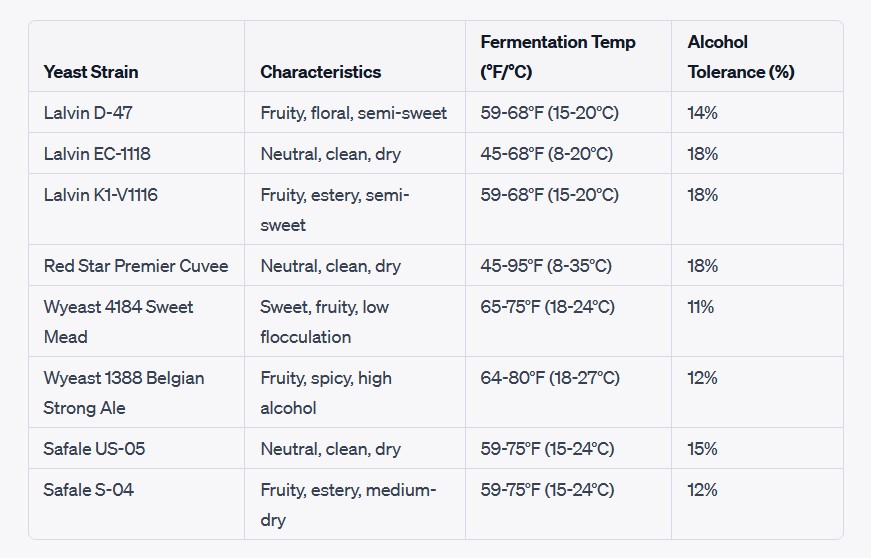Mead Yeast Chart

A beverage halfway between wine and beer, mead has long held fascination for alcoholic beverage connoiseurs, and today, it is undergoing a resurgence of interest in the public eye. As a result, more and more brewers are seeking a mead yeast chart to figure out which yeast might be best for their mead, and how the best yeasts will perform.
What Is Mead?
First, for those unaware, mead is the most ancient alcohol beverage in human history, predating grape wine by thousands of years. While we often think of wine as the oldest alcoholic beverage for humans, the truth is that the wine we are typically talking about from tens of thousands of years ago was “honey wine” which is mead.
Indeed, anthropologists have found evidence that our apelike ancestors collected saps and syrups from palm trees and wild honey from hives and then waited for it to ferment before drinking it.
We now call this beverage mead.
Honey, water, and yeast are all that are required to make this beverage typically high in alcohol, between 11% and 14%.
Thus, we can connect mead to both wine and beer.
Like wine, mead draws on the incredible sweetness of honey, so tons of fermentable sugars are available for yeast to convert to alcohol and carbon dioxide, producing a drink with a high ABV.
At the same time, like beer, mead requires a mixture of honey and water, rather than simply fermenting the syrup alone. The fermentation process of mead also produces a thicker, richer, frothy beverage closer to beer than wine.
Still, you can’t really get it wrong if you compare it to either one.
What Yeast Do You Use for Mead?
The truth is that you can use virtually any yeast you would use for bread, wine, or beer with mead, but each one will produce a widely different style of mead.
Bread Yeast for Mead
A common question in the world of meadmaking is whether you can use bread yeast to make mead. The truth is you can use any Saccharomyces cerevisiae yeast to make mead or to ferment pretty much anything. The trick is that there are hundreds of documented strains of S. cerevisiae, and each one will give you a different spin.
Bread yeast in general will deliver a bread-like flavor to your mead, which can be a wonderful thing. In fact, many brewers in recent years have taken to using bread yeast for brewing. Some have even fermented with actual crusts of bread!
The only thing to keep in mind when brewing mead with bread yeast is that the alcohol tolerance for this yeast is much lower than typical wine yeast. Many bread yeasts will only tolerate an ABV around 6% to 8% before getting overwhelmed or stressed and either lying dormant or dying off.
So, if your goal is to produce a mead with a lower than normal ABV, bread yeast can be a great way to go.
Turbo Yeast for Mead
On the opposite side of the spectrum, you may be considering turbo yeast, which is a strain of yeast designed to tolerate very high ABVs, up to 24%.
Turbo yeast also has yeast nutrient included, so it will aid the yeast in the fermentation process.
The thing to be mindful of with turbo yeast, or any other yeast strain that tolerates a high alcohol content, is that the yeast will consume a much higher percentage of the sugars in your must and result in a much drier and less sweet mead in the end.
Mead Yeast Nutrient
Another common question that arises around the making of mead is one of yeast nutrient. Do you need it? And if so, why?
The truth is that our ancestors never needed yeast nutrient while they were making mead thousands, and even hundreds, of years ago.
But most of us know by now that we no longer live in those times of highly nutritious soil and food products. Today, the nutrient levels in most foods are a fraction of what they were when our ancestors roamed the earth.
Furthermore, our ancestors were foraging for wild honey and allowing wild yeast to ferment their mead.
Most of us today are using commercial honey and commercial yeast.
Thus, if you are using wild honey and allowing for spontaneous fermentation, you may not need any yeast nutrient at all.
If, however, you are buying your honey from a commercial supplier and using dried yeast from an industrial package, you probably will need some yeast nutrient.
Without yeast nutrient, you run the risk that your yeast will not grow and flourish in the must as it ferments, which can result in stagnant or incomplete fermentation and off-flavors.
The general guidelines for yeast nutrient with mead advise adding ½ teaspoon of nitrogen-rich nutrient at the start of fermentation and then another ¼ teaspoon once the SG has dropped.
Best Yeast for Mead
Across the board, mead makers agree that Lalvin D-47 is an ideal yeast for mead. It ferments relatively quickly with little foam and will provide a rather dry mead. It also brings out the natural characteristics of the honey used.
Of course, there are many other yeasts that can make a great mead, from champagne yeasts to bread yeasts, and as a novice mead maker, it is worth exploring them all in small batches to see which strain and which result you prefer for your customers.
Below, you will find our mead yeast chart that can help you decide which factors are important to you, and therefore figure out which ones to try out first.
Mead Yeast Chart
Mead yeast selection is an essential aspect of making mead, as different yeast strains can impart distinct flavors, aromas, and fermentation characteristics to your final product. Here’s a basic chart outlining some popular yeast strains used in meadmaking:

Please note that this chart provides a general overview of some commonly used mead yeast strains, but there are many more strains available. The choice of yeast will depend on your desired mead style, sweetness level, and flavor profile.
Keep in mind that fermentation temperature and other factors such as nutrient additions and aeration also play a significant role in the final outcome of your mead. Always follow the specific recommendations provided by the yeast manufacturer and consider conducting small-scale experiments to determine the yeast that best suits your preferences.
Summing It All Up
In the end, the best mead will be the one that draws on the ancient ways of our ancestors. The more you can harken back to those days of using natural resources and kind of letting “nature take its course,” the more you will feel in touch with the earliest experiences we had as humans building a relationship with the world around us.
But of course, you can always just start with a jar of standard honey and a packet of bread yeast.
Cheers!
No matter which type of yeast you decide to use for your mead, monitoring it at all times can make a huge difference in the quality of the final product. Join the hundreds of brewers and vintners from all around the world using the Smartest Automated Yeast Cell Counter! Request a Free Demo Account today and experience firsthand how Oculyze can take your brewery to the next level!
Sources:


